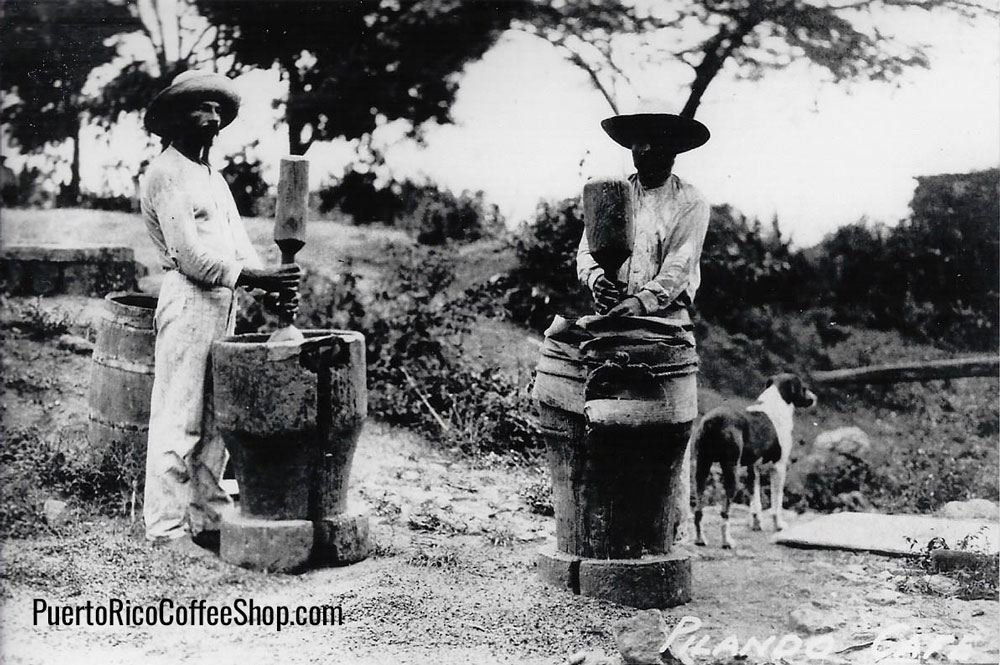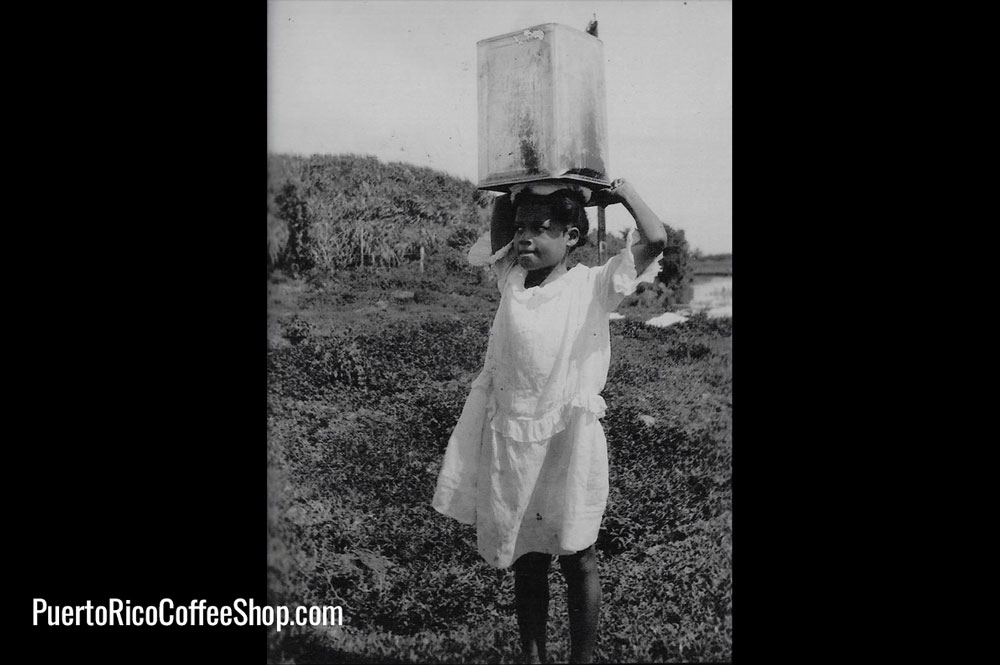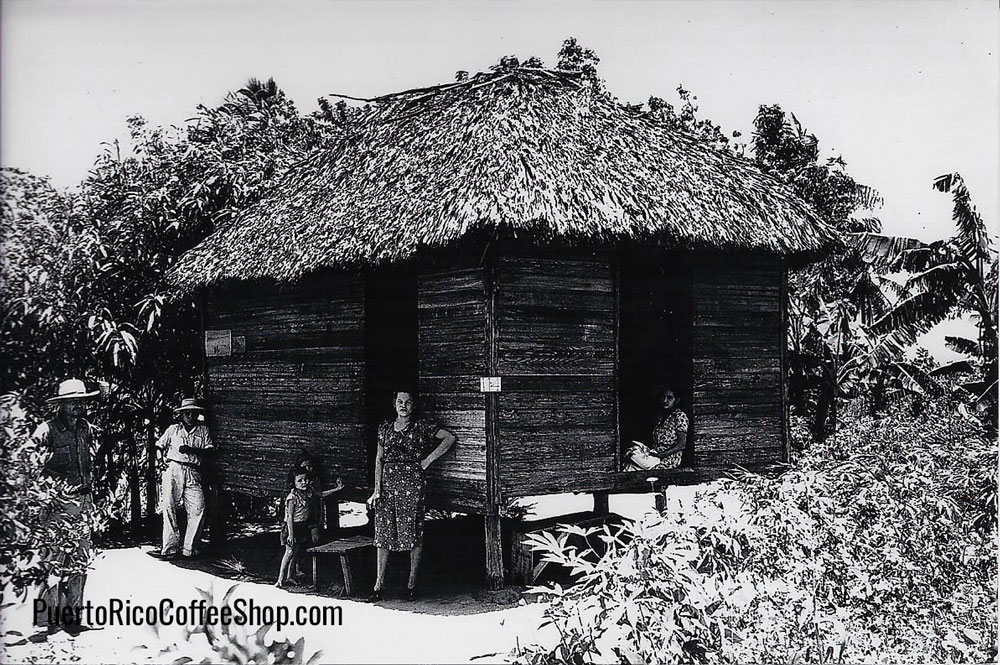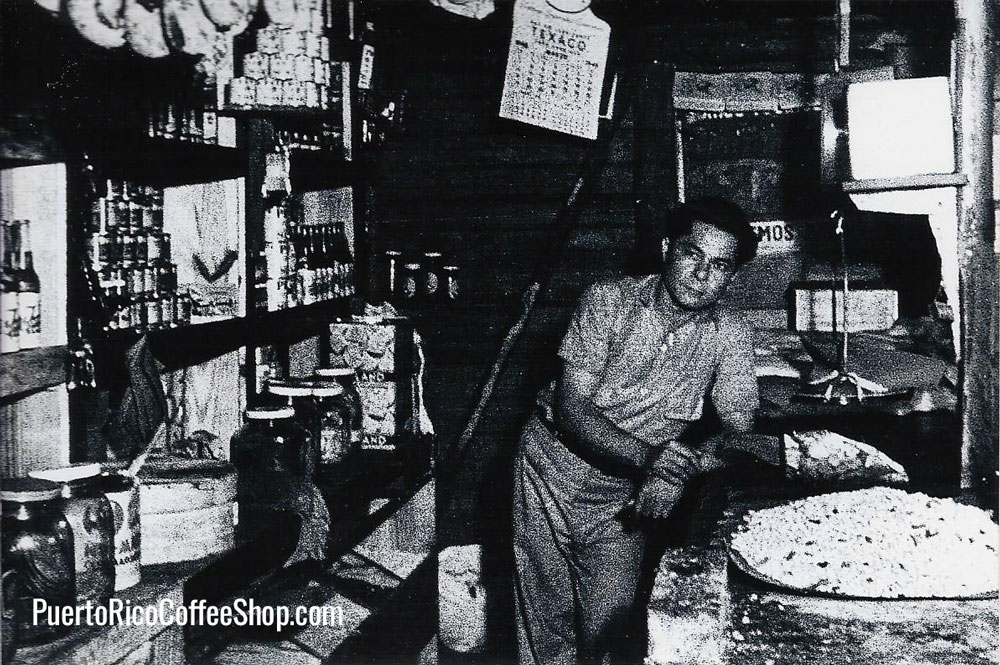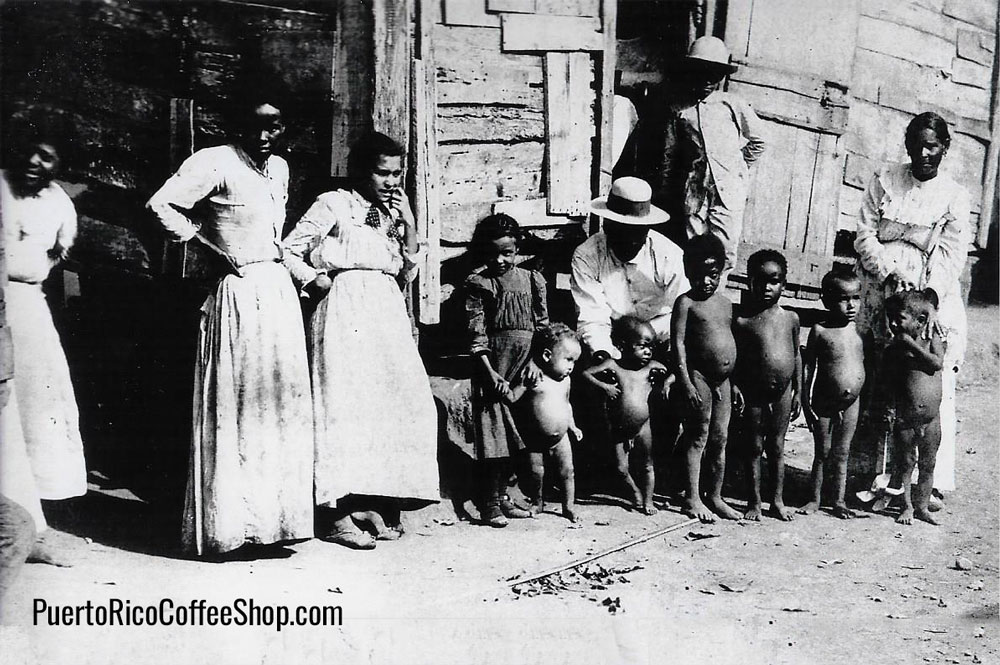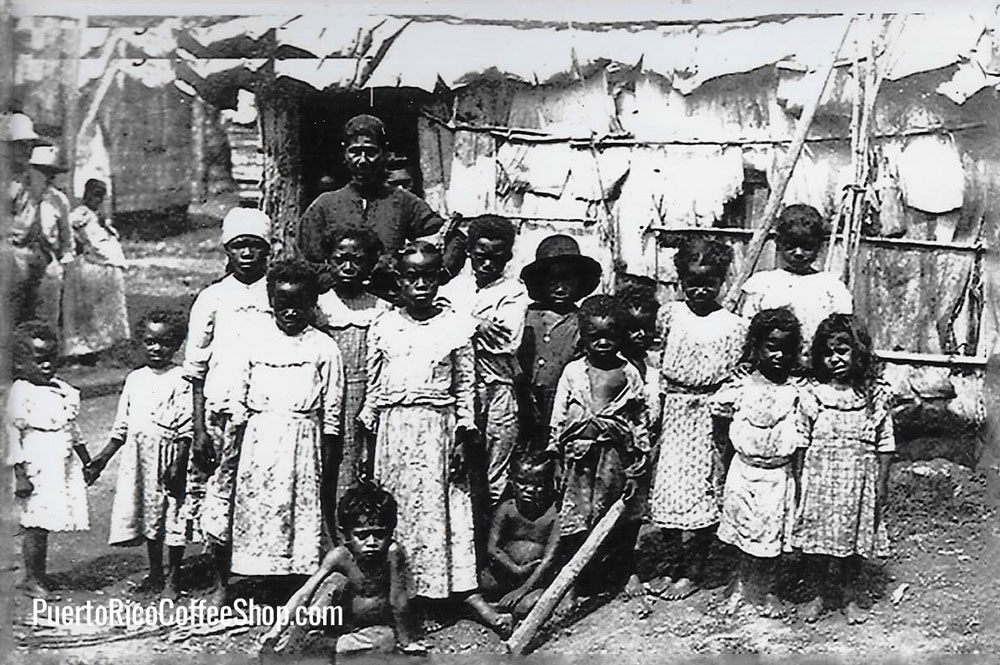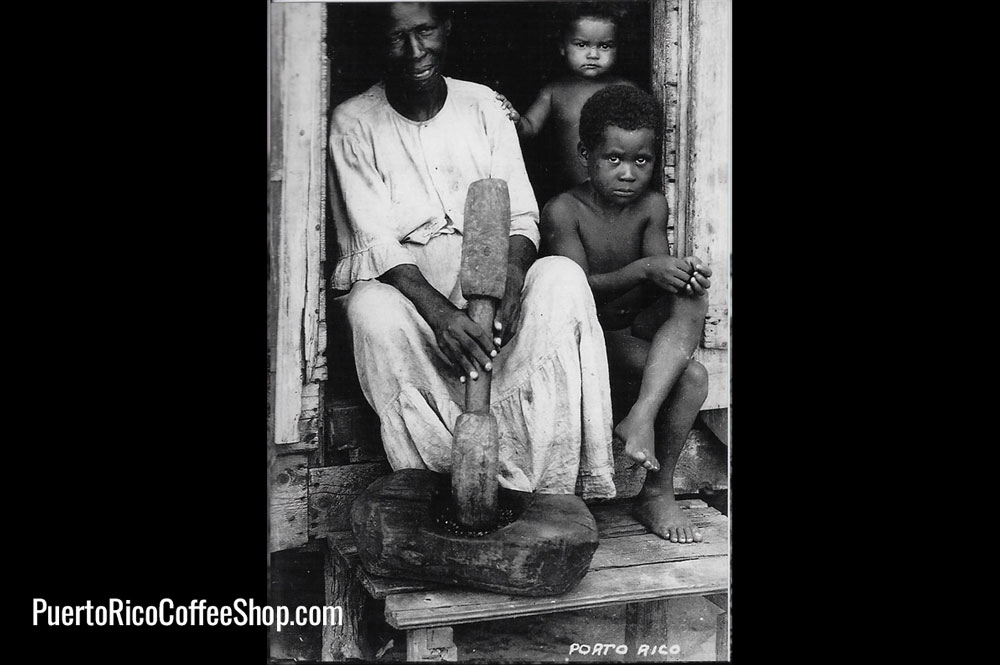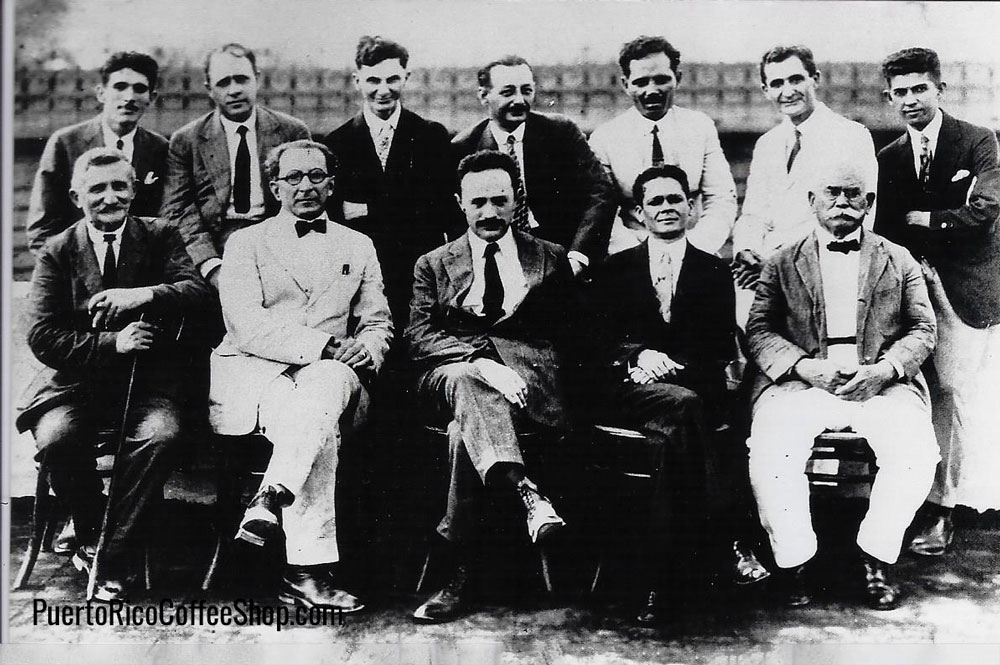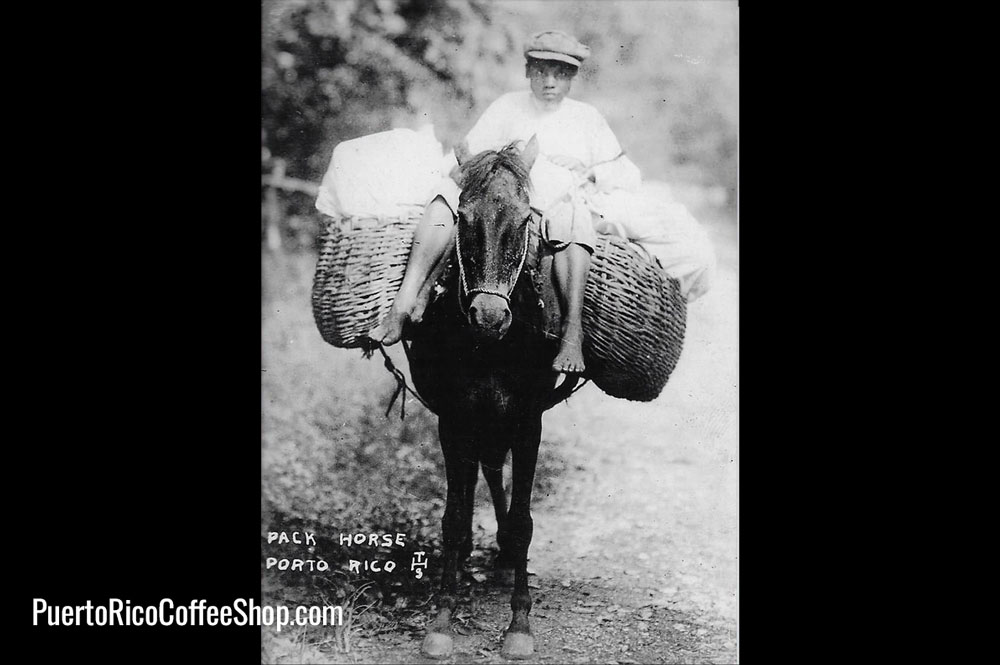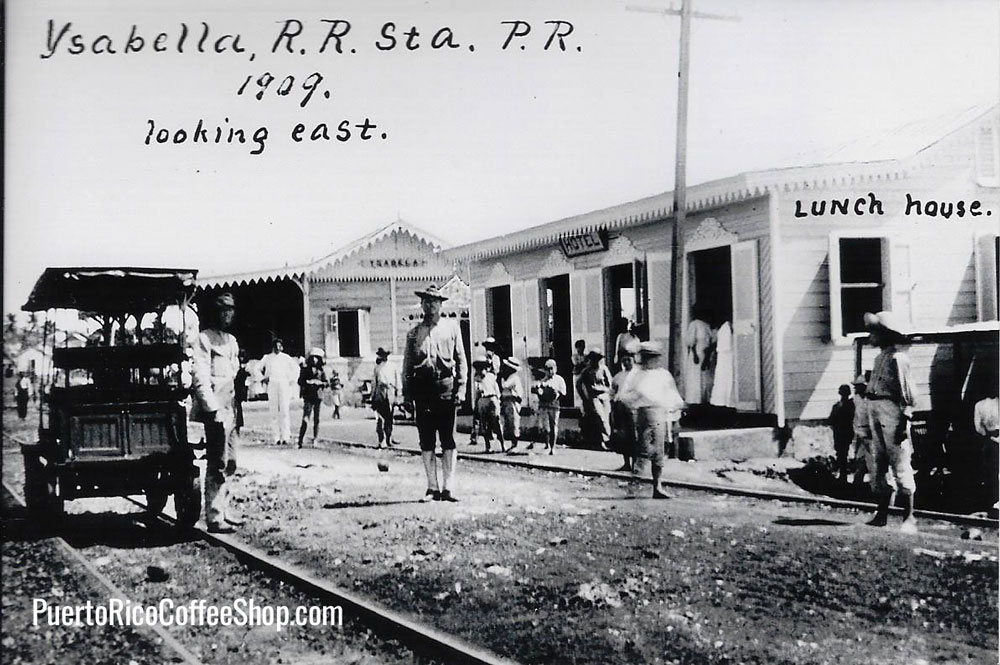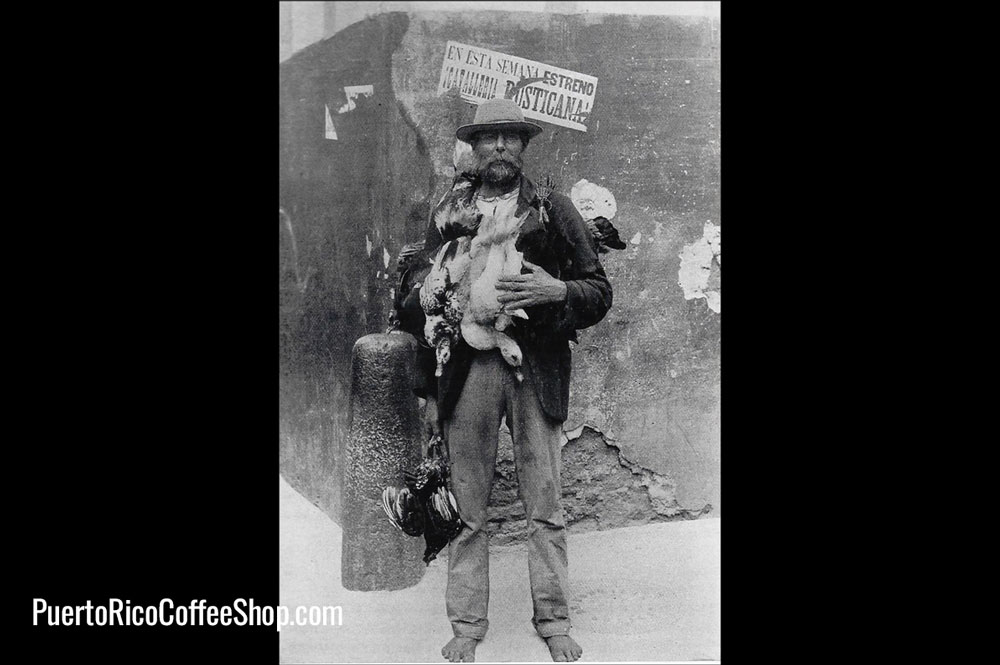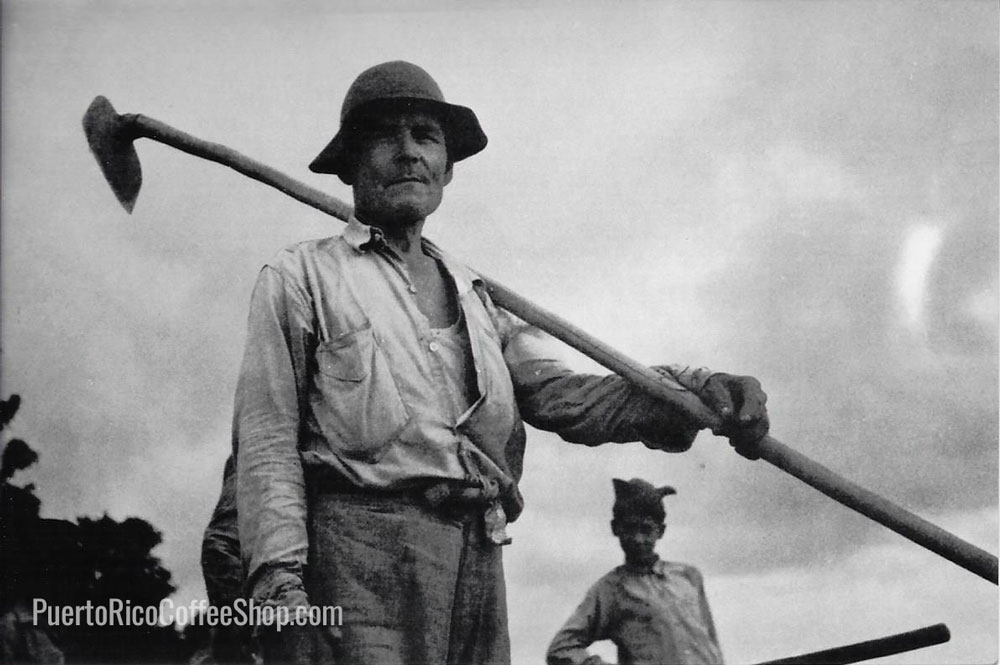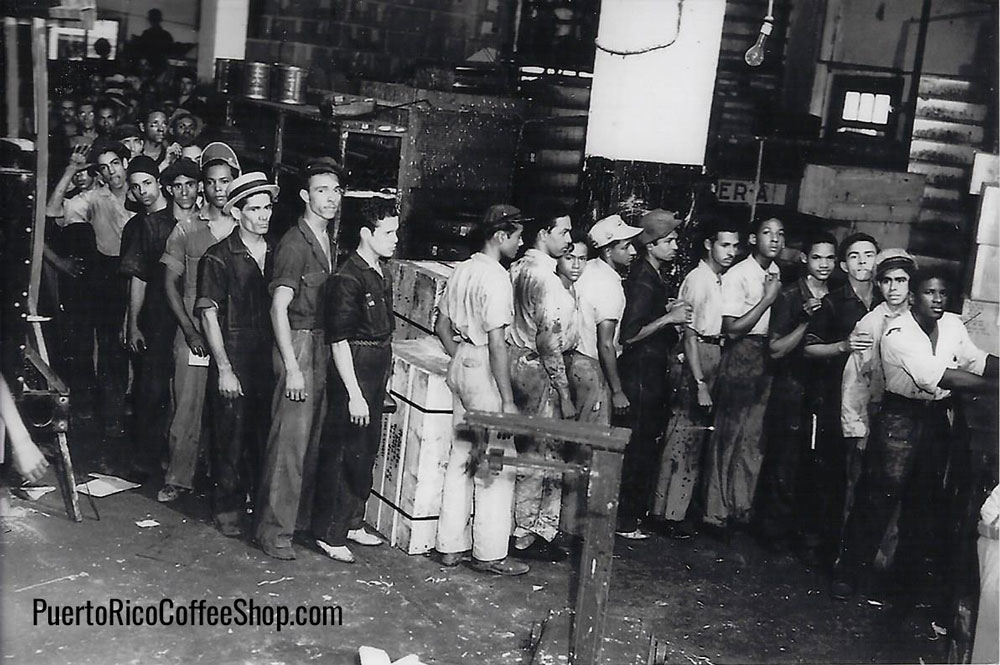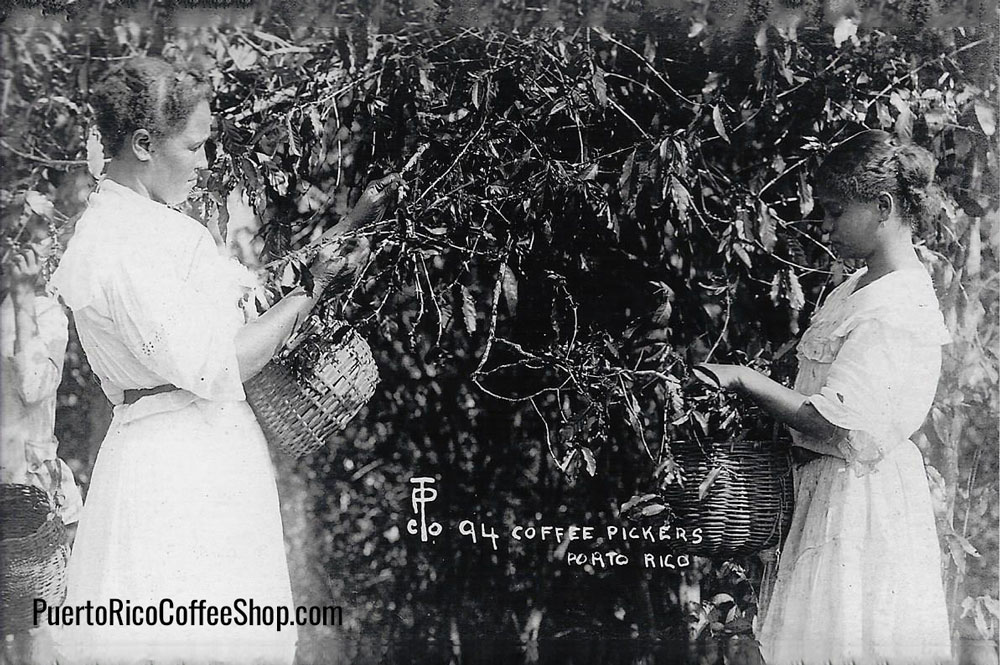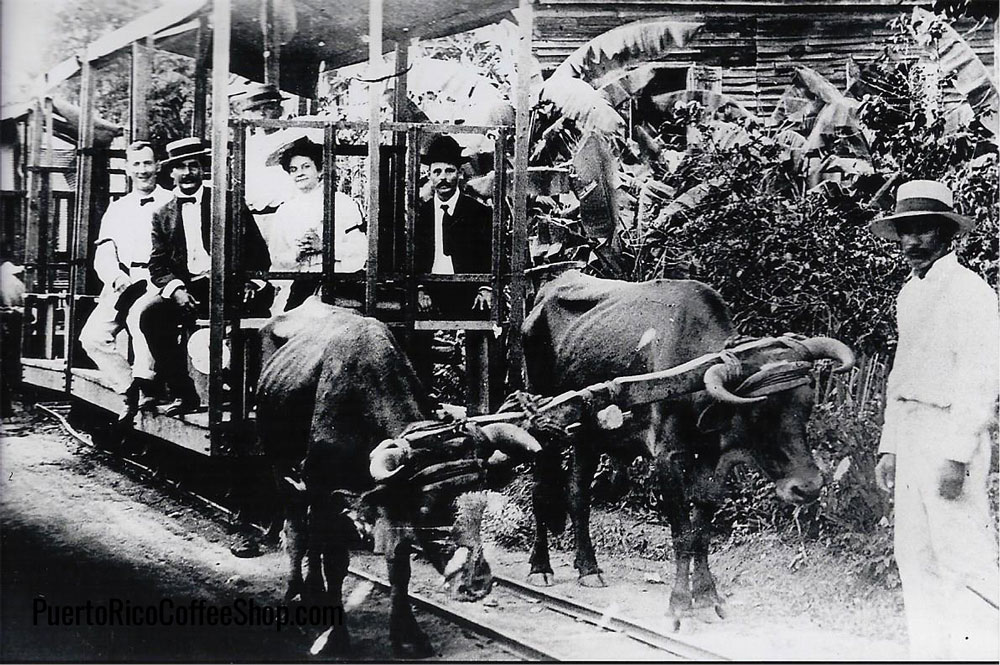Coffee Haciendas in Puerto Rico
Our Puerto Rico Coffee History in the 1900 hundreds
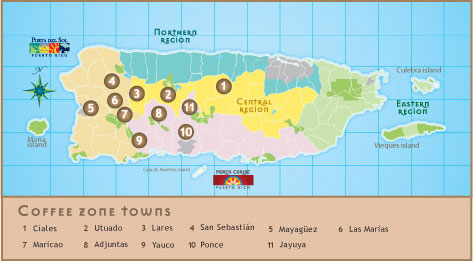
Cultivation Process
Coffee cultivation is both time-consuming and labor-intensive as the plants take years to mature and must be harvested by hand. Only vigorous, healthy plants, aged 6 to 10 years in age, are eventually selected for the final harvest. Cultivators must carefully examine and select only those specimens clearly bearing the most outstanding characteristics of the specific varietal to be produced. Altitude, rainfall, and climate are all critical to the quality of the coffee harvest. Puerto Rico's lofty central mountain range, known as La Cordillera Central, offers one of the world's most idoneous settings for year-round coffee cultivation.
Harvest of the fruit
Processing: wet or dry?
Two principal methods exist for processing coffee beans once they are harvested. Traditional dry processing is less labor-intensive and less expensive. However, due to a loss of quality, dry processing is primarily used today in Brazil and parts of Africa for the mass production of lower-quality beans. Dry processing is also highly climate-dependent, as the beans are ordinarily sun-dried, which renders the process somewhat unpredictable in nature. Wet processing is the much more accepted method for the production of higher-grade coffee. In wet processing, harvested cherries are carefully directed down a series of water channels where they receive an initial cleansing. Unripened fruit tends to sink to the bottom while ripened fruit will continue to float.
Pulping
The coffee bean used for roasting is not the cherry itself-but rather, its enclosed seeds. Seeds are flat in shape and are normally found in pairs: two per cherry. To get ready for roasting, these seeds must first be physically separated from the surrounding fruit flesh. This process, known as ‘pulping', should be done the same day of harvest to ensure optimal quality.
Washing and Drying
After fermentation, the beans must be washed and then dried-either on long racks lying in the sun or in rotating mechanical drums which circulate hot air within their chambers. Traditional sun-drying can last up to a full week, depending on the local weather conditions whereas mechanized drum-drying is usually accomplished in a day.
Hulling
At this stage, the beans themselves are still encased in a silky, protective inner skin known as the "parchment." Hulling is necessary to remove this skin and prepare the beans for roasting. Special machines accomplish this by mechanical friction which physically tears the husk away from the bean. After hulling, the beans are typically olive-green in color and consequently, coffee, once it has been hulled, is often referred to as "green coffee."
Roasting
Now the beans are ready for roasting. The application of smooth, uniform heat elicits qualities of both flavor and aroma from the bean critical to its final performance. The bean physically swells. Color changes as well, now acquiring the characteristic nutty-brown to dark chocolaty-brown tones associated with the beverage itself.
Hacienda Safra –Adjuntas Enjoy, step by step, how a quality coffee is processed and add to the experience a visit to Guilarte River.
Road 131 Km. 3.1, Guilarte Suburb
Hours:Open Mon-Sat 8 AM – 5 PM
Phone: 787-829-5826
haciendasafra@yahoo.com
Hacienda Ana I In Jayuya, Puerto Rico, you can enjoy a walk through the coffee plantation combined with leisure activities like bird watching, horseback riding and others.
Town: Adjuntas
Region: Porta Caribe
Hours: Lunes-Sabado 7:30 AM-3:00PM Call for reservations
Phone: 787-378-7551
Hacienda Buena Vista (Conservation Trust) A beautifully restored, 19th century coffee mill and plantation, that provides a glimpse of living and working conditions in times past.
Town: Ponce
Region: Porta Caribe
Hours: Miercoles- Domingo 8:30, 10:30, 1:30,
3:30. Por reservaciones solamente
Phone: Tel. 787-722-5882(lunes a viernes). Tel. 787.284.7020(sábado y domingo)
Hacienda Palma Escrita/La Casona Plantation walking tour where you will learn about the coffee process. Can appreciate one of the old house of the town, with a beauty arquitecture and lot of history.
Town: Las Marías
Region: Porta del Sol
Hours: Lunes-Sabado 9:00 AM-5:00pm
Domingo solo por reservaciones
Phone: 787-210-8252
cafelacasona@yahoo.com

